Caryn

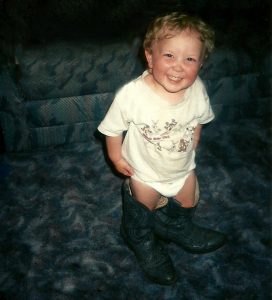 My grandson, Chris Petersen was the first one to make me a grandma. It was a wonderful day. Amazing, he managed to accomplish two great things that day making my goal of being a grandma by the time I was 40 and being born on his great grandmother, Joann Schulenberg’s birthday. I was privileged to be in the room when he arrived, and it was a wonderful blessing to me…one I will never forget. Chris was a wonderful and silly boy. He made the greatest faces and totally loved making all the animal sounds, and he knew them by heart.
My grandson, Chris Petersen was the first one to make me a grandma. It was a wonderful day. Amazing, he managed to accomplish two great things that day making my goal of being a grandma by the time I was 40 and being born on his great grandmother, Joann Schulenberg’s birthday. I was privileged to be in the room when he arrived, and it was a wonderful blessing to me…one I will never forget. Chris was a wonderful and silly boy. He made the greatest faces and totally loved making all the animal sounds, and he knew them by heart.
These days, Chris is all grown up, married to a wonderful girl named Karen, and has two wonderful babies of his own named Cambree and Caysen. He is the assistant 
 manager at Auto Zone in Casper, a job that is right up his alley. Chris is a car fanatic, and truly loves everything about his job. For a time, he was in food service, and while it was a job, it was not his heart. Since moving to Auto Zone, I have seen that happy boy come back. Chris is funny and loves to joke around. He is witty, and quick with a great punch line. He loves playing with his kids and making them laugh. When he is with them, he is a kid at heart. I love when he sends me funny texts or call to see if he can fool me, which he and Karen seem to be very good at. Hahaha!! It makes my day, when my kids and grandkids still want to talk or text me every day. It warms my heart to see Chris so happy with his life. He is very blessed.
manager at Auto Zone in Casper, a job that is right up his alley. Chris is a car fanatic, and truly loves everything about his job. For a time, he was in food service, and while it was a job, it was not his heart. Since moving to Auto Zone, I have seen that happy boy come back. Chris is funny and loves to joke around. He is witty, and quick with a great punch line. He loves playing with his kids and making them laugh. When he is with them, he is a kid at heart. I love when he sends me funny texts or call to see if he can fool me, which he and Karen seem to be very good at. Hahaha!! It makes my day, when my kids and grandkids still want to talk or text me every day. It warms my heart to see Chris so happy with his life. He is very blessed.
Chris has a Camaro, and he has decided that he is going to wrap it with Rhino, which I think looks very cool. He 
 hasn’t said if he will go black or choose a color, but I’ve seen some of these done, and it is cool. His car has won him awards, and he is very proud of it. His kids love to be in the car too, so I guess they know a hot rod when they see one. They are their daddy’s kids after all. Of course, the Camaro is a summer car. Chris and Karen have 4-wheel drives for the winter weather, and this year it has been a good thing. We have had a banner snow year in Casper, and 4-wheel drive is essential. Nevertheless, Summer is coming, and it will be nice to take out the old hot rod sometimes. Today is Chris’ 27th birthday…how can that be already?? Happy birthday Chris!! Have a great day!! We love you!!
hasn’t said if he will go black or choose a color, but I’ve seen some of these done, and it is cool. His car has won him awards, and he is very proud of it. His kids love to be in the car too, so I guess they know a hot rod when they see one. They are their daddy’s kids after all. Of course, the Camaro is a summer car. Chris and Karen have 4-wheel drives for the winter weather, and this year it has been a good thing. We have had a banner snow year in Casper, and 4-wheel drive is essential. Nevertheless, Summer is coming, and it will be nice to take out the old hot rod sometimes. Today is Chris’ 27th birthday…how can that be already?? Happy birthday Chris!! Have a great day!! We love you!!

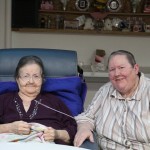 My mother-in-law, Joann Schulenberg was stay-at-home mom for most of her life. She cooked and baked, as well as sewing, knitting, and crocheting, in addition to the normal stay-at-home mom duties. She was an excellent cook, and the thought of her baking prowess still makes my mouth water. I came across some Cinnabon sticky buns at Walmart the other day, and it reminded me of her Carmel Pecan Cinnamon Rolls. Nobody…and I mean nobody, made Carmel Pecan Cinnamon Rolls like she did. They were amazing!! She also made Murder Cake, which was like a chocolate cake with pudding dumped on it. It was so rich and yummy!! She also canned vegetables and meats for many years. Raising a cow at their property in the country made that feasible.
My mother-in-law, Joann Schulenberg was stay-at-home mom for most of her life. She cooked and baked, as well as sewing, knitting, and crocheting, in addition to the normal stay-at-home mom duties. She was an excellent cook, and the thought of her baking prowess still makes my mouth water. I came across some Cinnabon sticky buns at Walmart the other day, and it reminded me of her Carmel Pecan Cinnamon Rolls. Nobody…and I mean nobody, made Carmel Pecan Cinnamon Rolls like she did. They were amazing!! She also made Murder Cake, which was like a chocolate cake with pudding dumped on it. It was so rich and yummy!! She also canned vegetables and meats for many years. Raising a cow at their property in the country made that feasible.
She spent her life perfecting her knitting, sewing, and crocheting, and she could make just about anything. Many people have been the beneficiaries of her work, and she made money on her things too. Craft fairs were her main selling place, but once her name was known, she got lots of calls for her crafts too. She could knit and crochet in her sleep and never miss a stitch. When she was diagnosed with Alzheimer’s Disease, and later when she moved into a nursing home, her knitting and crocheting went with her…in her mind anyway. She would see her oxygen tubing or a string on a blanked of piece of clothing and she would pick it up and “pick up” where she left off.
She was always cooking when she was at home, and so when they would tell her it was time for dinner at the nursing home, she would often tell them that she would get the potatoes on. All of the CNAs got a kick out of that, and then, they would tell her that it wasn’t her night to cook. That always put a smile on her face. If someone else did the cooking, that meant she could relax, for once. Never one to complain, she was a favorite out there. She was a people watcher, so being at the nursing home was entertainment for her too. She couldn’t 
 quite figure out the relationships there, and often thought that the CNAs were spouses to the residents. Then, when they would go help a different resident, she would ask me why that “girl” was sitting with that man, when her husband was this other man. It was really quite comical. I never thought of Alzheimer’s Disease as a curse, like many people do. My mother-in-law didn’t grieve, because she didn’t realize they were gone. They would always be back soon. Today would have been my mother-in-law’s 92nd birthday. Happy birthday in Heaven, Mom. We love and miss you very much.
quite figure out the relationships there, and often thought that the CNAs were spouses to the residents. Then, when they would go help a different resident, she would ask me why that “girl” was sitting with that man, when her husband was this other man. It was really quite comical. I never thought of Alzheimer’s Disease as a curse, like many people do. My mother-in-law didn’t grieve, because she didn’t realize they were gone. They would always be back soon. Today would have been my mother-in-law’s 92nd birthday. Happy birthday in Heaven, Mom. We love and miss you very much.

 Many people think that the Leaning Tower of Pisa was once straight, and then gradually began to lean, but that is not the case at all. Nevertheless, the lean became problematic over time. Construction on the Leaning Tower began on August 9, 1173. The plan was for the tower to house the bells of the vast cathedral of the Piazza dei Miracoli, which means the “Place of Miracles” in English. The city of Pisa at that time was a major trading power and one of the richest cities in the world. The bell tower was designed to be the most magnificent tower Europe had ever seen. Work progressed…until the tower was just over three stories tall, and then it abruptly stopped for reasons unknown. There has been speculation as to why the construction was stopped. Some people think it may have been because of economic or political strife, but the consensus seems to be that the engineers may have noticed that even then, the tower had begun to sink down into the ground on one side.
Many people think that the Leaning Tower of Pisa was once straight, and then gradually began to lean, but that is not the case at all. Nevertheless, the lean became problematic over time. Construction on the Leaning Tower began on August 9, 1173. The plan was for the tower to house the bells of the vast cathedral of the Piazza dei Miracoli, which means the “Place of Miracles” in English. The city of Pisa at that time was a major trading power and one of the richest cities in the world. The bell tower was designed to be the most magnificent tower Europe had ever seen. Work progressed…until the tower was just over three stories tall, and then it abruptly stopped for reasons unknown. There has been speculation as to why the construction was stopped. Some people think it may have been because of economic or political strife, but the consensus seems to be that the engineers may have noticed that even then, the tower had begun to sink down into the ground on one side.
The tower sat unfinished for 95 years, which allowed the building to settle, and the new chief engineer tried to figure out a way to compensate for the tower’s visible lean by making the new stories slightly taller on the short side. In theory, that may have seemed like a viable solution, but when you add weight without addressing the problem that is causing the building to sink, you are fighting against yourself. By 1278, when the workers had reached the top of the seventh story, they were forced to stop construction again, because they realized that the southward tilt was now nearly three feet…even with the adjustments they had tried to make to compensate.
The frustrated Italian government, rather at its wits end, announced on February 27, 1964, that it would be accepting suggestions on how to save the renowned Leaning Tower of Pisa from collapse. By this time, the top of the 180-foot tower was hanging an astonishing 17 feet south of the base, and to make matters worse, studies showed that the tilt was increasing by a fraction every year. That may not seem like so much, but like the “straw that broke the camel’s back,” no one knew Exactly when the point would come when the tower could not be saved. That also meant that the tower was unsafe to allow people to come in, or at least it was perceived to be eminently unsafe, and when the experts warned that the medieval building…one of Italy’s top tourist attractions, was in serious danger of collapse in an earthquake or storm, something had to be done.
The Italian government began to reach out in earnest for proposals to save the Leaning Tower, and proposals came from all over the world, but it was not until 1999 that successful restorative work began. In recent years, the cause of the lean was finally determined to be that the tower’s lean was caused by the remains of an ancient river estuary located under the building. That information told them that a completely safe resolution was unlikely, and that straightening the tower was completely out of reach in its current location.
In 1990, the Italian government closed the Leaning Tower’s doors to the public out of safety concerns and began considering more drastic proposals to save the tower. Then, in 1992, in an effort to temporarily stabilize the building, plastic-coated steel tendons were built around the tower up to the second story. In 1993, a concrete foundation was built around the tower, adding counterweights on the north side. The use of these weights lessened the tilt by nearly an inch, bringing new hope to the people. Still, it was an eyesore, and in 1995, the commission overseeing the restoration sought to replace the unsightly counterweights with underground cables. The strange method to do this was that engineers froze the ground with liquid nitrogen in preparation for the removal of the counterweights. Unfortunately, this actually caused a dramatic increase in the lean and the project was called off. Finally, in 1999, engineers began a process of soil extraction under the north side that within a few months was showing positive effects. The soil was removed at a very slow pace, no more than a gallon or two a day, and a massive cable harness held the tower to avoid any sudden destabilization. Finally, it seemed that progress was being made. Within six months, the tilt had been reduced 
 by over an inch, and by the end of 2000, nearly a foot. Relieved, the Italian government was able to reopen the tower to the public in December 2001, after a foot-and-a-half reduction had been achieved. While this will not stop the continuing tilt, it is expected that those 18 inches will give another 300 years of life to the Leaning Tower of Pisa…an amazing feat indeed. The tower will have to be carefully monitored to ensure the safety of those who visit it every year, but for now, disaster has been averted.
by over an inch, and by the end of 2000, nearly a foot. Relieved, the Italian government was able to reopen the tower to the public in December 2001, after a foot-and-a-half reduction had been achieved. While this will not stop the continuing tilt, it is expected that those 18 inches will give another 300 years of life to the Leaning Tower of Pisa…an amazing feat indeed. The tower will have to be carefully monitored to ensure the safety of those who visit it every year, but for now, disaster has been averted.
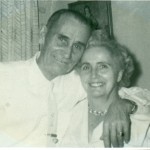
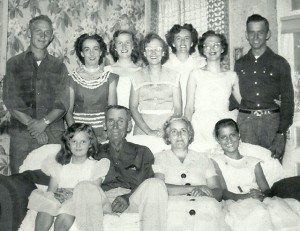 My grandma, Hattie Byer was never a tall woman. I like to say that she was 5 feet…in her tall days, because most of us remember her as being more like 4 foot 10 inches, give or take an inch. Don’t let her short stature fool you, however, because my grandma was a capable woman in every way, especially in the handling of children. She raised nine of her own, and the grandchildren were no match for her either. It wasn’t that Grandma was mean, but rather that Grandma didn’t take any “guff” from the kids. I can attest to that, because I made the mistake of going up against her once. Yes, I said once. After that, I decided that going up against Grandma wasn’t in my best interest, hahahaha!!
My grandma, Hattie Byer was never a tall woman. I like to say that she was 5 feet…in her tall days, because most of us remember her as being more like 4 foot 10 inches, give or take an inch. Don’t let her short stature fool you, however, because my grandma was a capable woman in every way, especially in the handling of children. She raised nine of her own, and the grandchildren were no match for her either. It wasn’t that Grandma was mean, but rather that Grandma didn’t take any “guff” from the kids. I can attest to that, because I made the mistake of going up against her once. Yes, I said once. After that, I decided that going up against Grandma wasn’t in my best interest, hahahaha!!
Whenever one of her kids got out of line, Grandma was very likely to turn them over her knee. Everyone’s views on spanking children are different, but in those days, everyone spanked their kids. My personal opinion on that matter is that in the days of spanking your kids, the children were much more well behaved, but that is my opinion, and everyone is entitled to their own opinion. Grandma was one who believed in spanking too, and I’m pretty sure the boys might have been a little more mischievous than the girls, with the possible exception of my mom, who was right in the middle of the two boys, and very loyal to both of them. Mom made the mistake of voicing her displeasure to her mom once concerning the spanking of her brother. Grandma let her go on, while she finished the spanking, and when both of the kids started to run outside, Grandma grabbed my mom by the hair, and proceed to give her a spanking to, for “improperly interfering with the discipline of her brother.” I think Mom got the message…loud and clear, and I don’t believe she ever did that again.
Grandma was well able to handle her adult kids too, as my Aunt Bonnie found out one time, when she 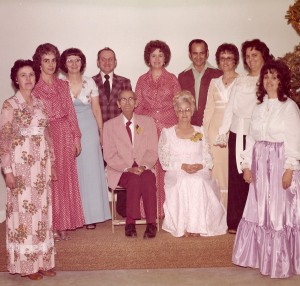
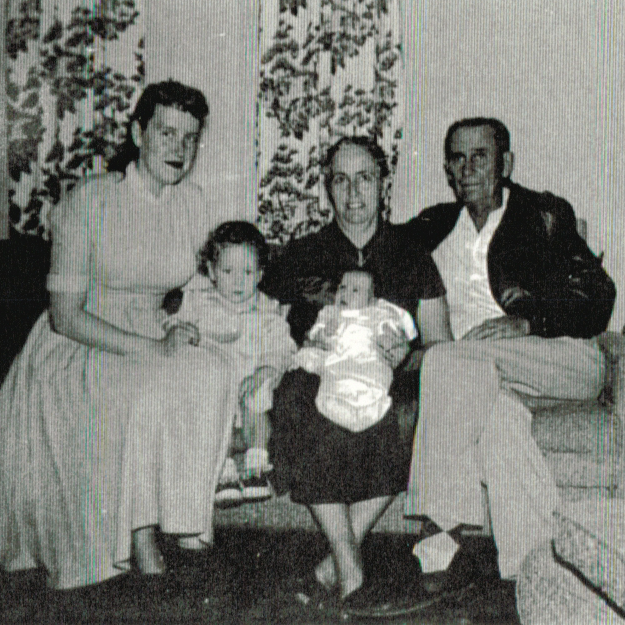 mistakenly told her mom that she couldn’t spank her these days. Well, Grandma quickly reached out, and grabbed Aunt Bonnie by the feet, taking her swiftly to the floor. While she didn’t turn Aunt Bonnie over her knee, I think they both knew that she probably could have. Aunt Bonnie sat there on the floor with a shocked look on her face, and after the shock wore off, everyone in the room laughed hysterically, including Aunt Bonnie. Grandma never lost her touch. Today is the 114th anniversary of my grandmother’s birth. Happy birthday in Heaven, Grandma Byer. We love and miss you very much.
mistakenly told her mom that she couldn’t spank her these days. Well, Grandma quickly reached out, and grabbed Aunt Bonnie by the feet, taking her swiftly to the floor. While she didn’t turn Aunt Bonnie over her knee, I think they both knew that she probably could have. Aunt Bonnie sat there on the floor with a shocked look on her face, and after the shock wore off, everyone in the room laughed hysterically, including Aunt Bonnie. Grandma never lost her touch. Today is the 114th anniversary of my grandmother’s birth. Happy birthday in Heaven, Grandma Byer. We love and miss you very much.

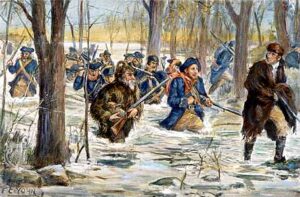 The British tried very hard to keep the United States colonies of Great Britain. The odds were in their favor, but they badly misjudged the determination of the early pioneers of this country. The Revolutionary War would bear that out. On February 5, 1779, George Rogers Clark departed Kaskaskia on the Mississippi River with a force of approximately 170 men, including Kentucky militia and French volunteers. Their goal was to take Fort Sackville (Fort Vincennes, at that time), British garrison under Lieutenant-Governor Henry Hamilton. The men traveled across what is now the state of Illinois, a journey of about 180 miles, much of it covered by deep and icy flood water until they reached Fort Sackville at Vincennes, in what is now Indiana. They reached the Embarras River on February 17th, placing them only 9 miles from Fort Sackville. Unfortunately, the river was too high to cross there, so they followed the Embarrass River down to the Wabash River, where the next day they began to build boats. Moral was low, because they had been without food for the last two days, and Clark struggled to keep his men from deserting. Clark later wrote that “I conducted myself in such a manner that caused the whole to believe that I had no doubt of success, which kept their spirits up.” He really had no choice, no matter what his true feelings were on the matter. Still, in a February 20 entry in Captain Bowman’s Field Journal, he describes the men in camp as “very quiet but hungry; some almost in despair; many of the creole volunteers talking of returning.” The situation grew more bleak by the day, and on February 22, Bowman reports that they still have “No provisions yet. Lord, help us!” and that “Those that were weak and famished from so much fatigue went in the canoes” as they marched towards toward Vincennes.
The British tried very hard to keep the United States colonies of Great Britain. The odds were in their favor, but they badly misjudged the determination of the early pioneers of this country. The Revolutionary War would bear that out. On February 5, 1779, George Rogers Clark departed Kaskaskia on the Mississippi River with a force of approximately 170 men, including Kentucky militia and French volunteers. Their goal was to take Fort Sackville (Fort Vincennes, at that time), British garrison under Lieutenant-Governor Henry Hamilton. The men traveled across what is now the state of Illinois, a journey of about 180 miles, much of it covered by deep and icy flood water until they reached Fort Sackville at Vincennes, in what is now Indiana. They reached the Embarras River on February 17th, placing them only 9 miles from Fort Sackville. Unfortunately, the river was too high to cross there, so they followed the Embarrass River down to the Wabash River, where the next day they began to build boats. Moral was low, because they had been without food for the last two days, and Clark struggled to keep his men from deserting. Clark later wrote that “I conducted myself in such a manner that caused the whole to believe that I had no doubt of success, which kept their spirits up.” He really had no choice, no matter what his true feelings were on the matter. Still, in a February 20 entry in Captain Bowman’s Field Journal, he describes the men in camp as “very quiet but hungry; some almost in despair; many of the creole volunteers talking of returning.” The situation grew more bleak by the day, and on February 22, Bowman reports that they still have “No provisions yet. Lord, help us!” and that “Those that were weak and famished from so much fatigue went in the canoes” as they marched towards toward Vincennes.
Their first real break came on February 20th, when they captured five hunters from Vincennes, who were traveling by boat. In their complete surprise, they revealed that Clark and his little army had not yet been detected. They also revealed that the people of Vincennes were sympathetic to the Americans, and not the British. The news served to revive the men, and the next day, they crossed the Wabash by canoe, leaving their packhorses behind. On foot, they marched towards Vincennes. It was still not an easy go of it, and sometimes the men found themselves in water up to their shoulders. A 4-mile-wide flooded plain made the last few days the hardest, and they were forced to use the canoes to shuttle the most weary and weakened men from high point to high point. Shortly before reaching Vincennes, they encountered a villager known to be a friend, who informed Clark that they were still unsuspected. Clark sent the man ahead with a letter to the inhabitants of Vincennes, warning them that he was just about to arrive with an army and that everyone should stay in their homes unless they wanted to be considered an enemy. The message was read in the public square, and no one went to the fort to warn Hamilton. Clark secured the surrender of the British garrison at 10am on February 25, 1779, after brutally killing five captive Native Americans who were British alleys, within view of the fort, probably to scare those inside.
Prior to the surrender of Fort Sackville, the British truly thought that they were on track to win this war and retain their control, but the surrender of Fort Sackville took the wind out of their sails, and literally marked the beginning of the end of British domination in America’s western frontier. There were only 40 British soldiers in Fort Sackville, and an equal number of mixed French volunteers and French settlers who fought on both sides of the American Revolution. The French portion of Hamilton’s force was reluctant to fight once they realized their compatriots had allied themselves with Clark. To further confuse those in the fort, Clark managed to make his 170 men seem more like 500 by unfurling flags suitable to a larger number of troops. The able woodsmen filling Clark’s ranks were able to fire at a rapid rate. That caused Hamilton to believe that he was surrounded by a substantial army. While Hamilton was occupied, Clark began tunneling under the fort planning to explode the gunpowder stores within it.
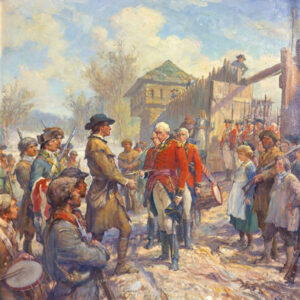
When a Native American raiding party attempted to return to the fort from the Ohio Valley, Clark’s men killed or captured all of them. The public tomahawk executions served upon five of the captives frightened the British, assuming that theirs might be a similar fate in Clark’s hands. When the British surrendered to Clark’s men, the Native Americans understood fully that they could no longer rely on the British to protect them from the Patriots. The British finally understood too, that they were no match for the determined patriots. The United States was finally free of the British.

 My grandniece, Christina Masterson has had a pretty busy year. She switched jobs. She had been working from home, calling people for collections. As we all know, that is a really difficult job to have, and Christina is a soft-hearted person, so I can see how collections would tear her up. Now, she is working in a doctor’s office doing the billing. That is really a much better job to have, if you ask me. Christina also works as a hostess for a Chinese restaurant on the weekends.
My grandniece, Christina Masterson has had a pretty busy year. She switched jobs. She had been working from home, calling people for collections. As we all know, that is a really difficult job to have, and Christina is a soft-hearted person, so I can see how collections would tear her up. Now, she is working in a doctor’s office doing the billing. That is really a much better job to have, if you ask me. Christina also works as a hostess for a Chinese restaurant on the weekends.
Christina lives on her own, with her little dog, Athena. In reality, Athena isn’t really a bad dog, but Christina’s cousin, Shai likes to tease that she is. She liked working from home, but that can get a little bit lonely sometimes. Being out in public is important too. Christina has also joined a bowling league and has really enjoyed that. Chritina is a people person, and she loves lifting people up and making them feel good about themselves. After a while of working from home and being more isolated, Christina is really enjoying the idea of branching out and getting back out in the world again. I think a lot of people are feeling that way after the “Covid Lockdowns” and the job losses many people faced. Thise who could work from home were ok, but many who had to go out to work, lost their jobs. It was a sad time for many.
Christina is close friends with her cousin, my granddaughter, Shai Royce, who is just five days younger than Christina. They try to spend some time together around the time of their birthdays, whenever they can. They take lots of pictures, and Shai calls them the “Adventures of Shai and Christina” and labels them with the year it is. They have been doing that for years, since they don’t live in the same state anymore. The girls have been 
 close for most of their lives. Of course, they went through times when they weren’t around each other much, but they have always loved each other and wanted to have more “adventures” together.
close for most of their lives. Of course, they went through times when they weren’t around each other much, but they have always loved each other and wanted to have more “adventures” together.
Probably the biggest excitement for Christina though was becoming an aunt recently. Her niece, Jocelyn, whom she calls “Josie” was born to her brother, Bradon and his wife. Christina told me that she has been waiting a long time to be an aunt, and now she finally is. Today is Christina’s birthday. Happy birthday Christina!! Have a great day!! We love you!!

 When I began dating my future husband, Bob Schulenberg, I didn’t have a brother or even a nephew. I had one brother-in-law, but he and my sister, Cheryl Masterson didn’t live here, so he had no influence on my life. Bob’s brother, Ron was just 6 years old at that time, and very sweet. It was interesting to suddenly have a boy in my otherwise girl-bound life. I had four sisters and no brothers. Ron’s boy ways were curious to me. I grew up in a very girly household, and Ron was all boy…a bit of a shock to my system. Nevertheless, Ron was a happy little 6-year-old boy, who often got to go with his big brother and his brother’s girlfriend to places like Dairy Queen. He was a good little boy, and the three of us always had a great time. As the years went by, and Ron became my brother-in-law, he seemed like he had always been my little brother, and he had…at least for most of his life.
When I began dating my future husband, Bob Schulenberg, I didn’t have a brother or even a nephew. I had one brother-in-law, but he and my sister, Cheryl Masterson didn’t live here, so he had no influence on my life. Bob’s brother, Ron was just 6 years old at that time, and very sweet. It was interesting to suddenly have a boy in my otherwise girl-bound life. I had four sisters and no brothers. Ron’s boy ways were curious to me. I grew up in a very girly household, and Ron was all boy…a bit of a shock to my system. Nevertheless, Ron was a happy little 6-year-old boy, who often got to go with his big brother and his brother’s girlfriend to places like Dairy Queen. He was a good little boy, and the three of us always had a great time. As the years went by, and Ron became my brother-in-law, he seemed like he had always been my little brother, and he had…at least for most of his life.
Ron loved the same things his dad, my father-in-law, Walt Schulenberg and my husband did…mechanics, and like them, he was a natural. After his time in the Army, and then a recall for Desert Storm, Ron went to college for mechanics. He has been working on everything from big trucks to cars ever since. Ron is an excellent mechanic, and thankfully for my husband, Ron is very good at rebuilding transmissions. They sometimes have a “tag-team” way of repairing a transmission that Bob is working on. Bob takes it out, Ron rebuilds it, and Bob puts it back in. It works well for both of them. Of course, Ron is always working on vehicle is his own garage, where he has his own lift, as well as all the tools he could need to fix just about anything.
Ron has always tried to help people who need it. With the winter we have had, Ron has worked to help keep 
 the roads cleared for the people out where he lives. The snow has been so deep, and people have needed the help. Ron is a good man, and people really appreciate him and his kindness. The past several years have been hard on Ron. He lost his wife, Rachel in early 2021. Ron has been working to rebuild life for himself and Rachel’s son Tucker, whom Ron adopted. He has also been there for Rachel’s other kids, Cassie and Riley, and their families. He is a good man. Today is Ron’s birthday. Happy birthday Ron!! Have a great day!! We love you!!
the roads cleared for the people out where he lives. The snow has been so deep, and people have needed the help. Ron is a good man, and people really appreciate him and his kindness. The past several years have been hard on Ron. He lost his wife, Rachel in early 2021. Ron has been working to rebuild life for himself and Rachel’s son Tucker, whom Ron adopted. He has also been there for Rachel’s other kids, Cassie and Riley, and their families. He is a good man. Today is Ron’s birthday. Happy birthday Ron!! Have a great day!! We love you!!

 My mom, Collene Spencer went home to be with the Lord, eight years ago today. It’s so hard for me to believe she has been gone that long. That was the day my sisters and I officially became adult orphans. It’s a strange thing to think about, after having your parents with you most of your life. I think that the things I miss most about my mom are her faith in God, her natural goodness, and her humor. Mom’s humor still makes me laugh today. She really was kind of a natural comedienne. She loved to laugh, and even more than that, she loved to make others laugh. She was known for the funny faces she made, and the goofy things she would do.
My mom, Collene Spencer went home to be with the Lord, eight years ago today. It’s so hard for me to believe she has been gone that long. That was the day my sisters and I officially became adult orphans. It’s a strange thing to think about, after having your parents with you most of your life. I think that the things I miss most about my mom are her faith in God, her natural goodness, and her humor. Mom’s humor still makes me laugh today. She really was kind of a natural comedienne. She loved to laugh, and even more than that, she loved to make others laugh. She was known for the funny faces she made, and the goofy things she would do.
Mom was the true middle sister. She had three older sisters, Evelyn Hushman, Virginia Beadle, Dolores Johnson, followed by brother Larry Byer. She also had a younger brother, Wayne Byer, followed by three sisters, Bonnie McDaniels, Dixie Richards, and Sandy Pattan. I think her humorous side might have come from her brothers, both of whom were hilariously funny. I could say they were a bad influence on her, but even with their mischievous personalities, they were really a good influence on her. The three of them were always in some sort of “trouble” with their mom. Not real trouble, just mischief. There was never a dull moment. That’s how it was when Mom got her girls laughing too. Never a dull moment.
My mom loved to sing, and she made sure that our days started off with something like “Keep on the Sunny Side” or “You Are My Sunshine.” Even if we didn’t “feel” sunny, she tried to bring out the sunshine in a cloudy day. We didn’t really know just what a wise woman our mother was, but looking back, I wish we had known. Starting your day with a smile is probably the single best way to start your day. Life isn’t always easy, but living life with a smile on your face gives it joy. All too often, we try to be far too serious, and we miss out on all the 
 funny parts of life. Mom didn’t hold grudges. She just wouldn’t allow those kinds of feeling to ruin her day or her life. She tried to teach that to us too, and I like to think she succeeded. We may not jump out of bed with a smile on our faces…at least not before a few cups of coffee, but we are all happy people, and on occasion, we still sing those songs, because it reminds us of our sweet mom. It’s really hard for me to believe that Mom has been gone for eight years now, but it is really easy to believe that she is in Heaven, because it was Jesus in her heart that made her so happy. We love and miss you everyday Mom, and we can’t wait to see you again.
funny parts of life. Mom didn’t hold grudges. She just wouldn’t allow those kinds of feeling to ruin her day or her life. She tried to teach that to us too, and I like to think she succeeded. We may not jump out of bed with a smile on our faces…at least not before a few cups of coffee, but we are all happy people, and on occasion, we still sing those songs, because it reminds us of our sweet mom. It’s really hard for me to believe that Mom has been gone for eight years now, but it is really easy to believe that she is in Heaven, because it was Jesus in her heart that made her so happy. We love and miss you everyday Mom, and we can’t wait to see you again.
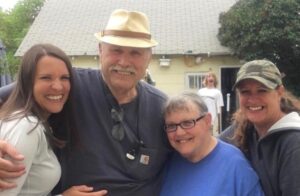
 My sister-in-law, Debbie Cook is my husband, Bob Schulenberg’s older sister. When they were younger, they were good friends, mostly I suppose, because of their closeness in age. Debbie was just 17 months older than Bob. I don’t know how close they were as kids, but as adults, they got along very well. In fact, it was because of that closeness that Bob and I met at all. Debbie and I were both working at Kmart. She had graduated from high school, and I was a senior in high school. She worked in the Deli, and I worked in the Millinery Department (handbags and wigs, for those who don’t know). I had a display by the Deli, and we became friends. Later, we would double date, and eventually, I was the maid of honor in her wedding, and she the matron of honor in mine.
My sister-in-law, Debbie Cook is my husband, Bob Schulenberg’s older sister. When they were younger, they were good friends, mostly I suppose, because of their closeness in age. Debbie was just 17 months older than Bob. I don’t know how close they were as kids, but as adults, they got along very well. In fact, it was because of that closeness that Bob and I met at all. Debbie and I were both working at Kmart. She had graduated from high school, and I was a senior in high school. She worked in the Deli, and I worked in the Millinery Department (handbags and wigs, for those who don’t know). I had a display by the Deli, and we became friends. Later, we would double date, and eventually, I was the maid of honor in her wedding, and she the matron of honor in mine.
After we both had children, the cousins became good friends. When Debbie and her husband, LJ Cook moved their family, including daughters, Machelle Moore and Susan Griffith, to Thermopolis, Wyoming from Casper,  Wyoming, our daughters would take turns spending a week with each other in the summers. Those were special times for everybody, and times I miss very much. I think we all do. Of course, we would not choose to go back, because we would miss out on so much, like grandchildren. Debbie has two grandsons, Weston and Easton Moore; and two granddaughters, Jala Satterwhite and Katlyn Griffith.
Wyoming, our daughters would take turns spending a week with each other in the summers. Those were special times for everybody, and times I miss very much. I think we all do. Of course, we would not choose to go back, because we would miss out on so much, like grandchildren. Debbie has two grandsons, Weston and Easton Moore; and two granddaughters, Jala Satterwhite and Katlyn Griffith.
Debbie and LJ have suffered some health issues as they have grown older, but they are working very hard to get themselves back to health. LJ had back surgery, and now, he feels so much better. Debbie has been trying to get healthy, and with the encouragement of her daughters, she has also done such a great job losing weight. She has realized that with age, can come decline, so Debbie has decided that she doesn’t want that to happen to her and LJ. So, she has been going to the senior center for exercise classes a few times a week, and as an added perk, getting pedicures there as well. She has been eating better and cooking more health-conscious meals for both her and LJ.
Debbie has been trying to get involved with the Powell community in the past few years, where they now live.
 She’s joined the “Giddy Up Gals” too. They are a part of the Red Hat Society. She has really become involved with the local senior center, including some of their trips to Cody. She also enjoys getting out of the house and making friends. These are things that Debbie hasn’t been able to do in recent years. I’m really happy for her and for LJ, because it’s been a long hard road, and now there is a light at the end of the tunnel. Today is Debbie’s 70th birthday. Happy birthday Debbie!! Have a great day!! We love you!!
She’s joined the “Giddy Up Gals” too. They are a part of the Red Hat Society. She has really become involved with the local senior center, including some of their trips to Cody. She also enjoys getting out of the house and making friends. These are things that Debbie hasn’t been able to do in recent years. I’m really happy for her and for LJ, because it’s been a long hard road, and now there is a light at the end of the tunnel. Today is Debbie’s 70th birthday. Happy birthday Debbie!! Have a great day!! We love you!!

 For people who live in Casper, Wyoming, the mountain to the south has long been a great recreation area. They are campgrounds and a ski resort, not to mention the trails that dot the mountain top. While the mountain is mostly recreational today, along with a number of people who live on the mountain full-time, that wasn’t always the case. In 1890, a gold strike on Casper Mountain brought a little gold rush to the area…along with many different kinds of people, looking to strike it rich. The mountain was crawling with people from all walks of life, but while they looked until 1895, they didn’t find much gold. The materials found were mostly asbestos and other non-profitable minerals.
For people who live in Casper, Wyoming, the mountain to the south has long been a great recreation area. They are campgrounds and a ski resort, not to mention the trails that dot the mountain top. While the mountain is mostly recreational today, along with a number of people who live on the mountain full-time, that wasn’t always the case. In 1890, a gold strike on Casper Mountain brought a little gold rush to the area…along with many different kinds of people, looking to strike it rich. The mountain was crawling with people from all walks of life, but while they looked until 1895, they didn’t find much gold. The materials found were mostly asbestos and other non-profitable minerals.
Nevertheless, there arose a need for a town and supply stores, so the town of Eadsville was formed. It was located 12 miles due south of Casper on top of Casper Mountain. It was founded by Charles W Eads in 1891 after he had staked a 600-foot x 1,500-foot mining claim around a large spring. The town was named for one Charles W Eads, who was the second person to settle in Casper, following a Mr. Merritt, who was credited with being the first to locate to Casper. Eads appeared in the Natrona County Tribune, May 13, 1908, and was apparently accused of being a horse thief. He would go on to do time in prison.
It was thought that there were large deposits of precious minerals, such as gold, silver, lead, and copper. The town continued to develop, with lots being sold in the town during 1891 – 1892. During that time, about a dozen cabins were built. While the town became a ghost town before very long, the foundations of three cabins still remain today. During the boom years, some 40 to 50 people lived there, all hoping to make their millions in gold and silver. Some traces of gold and silver were found, and copper was also mined, but asbestos and feldspar were the most economical to mined. The “spar” was still being mined after nearly 100 years. It’s no longer being mined, but it could be again, if there was a need.
After a time of trying unsuccessfully to make a living, the miners finally gave up and abandoned the town 
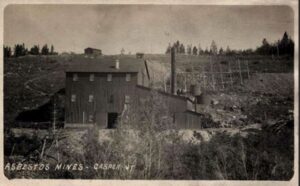 between 1905 and 1906. The site was rediscovered in the 1980s, and numerous artifacts were uncovered during an archeological excavation that was conducted between 1983 and 1985. At one time it was surveyed as a stamp mill. Eadsville was located on Casper Mountain at an elevation of 7,800 feet and covered an area 20 acres.
between 1905 and 1906. The site was rediscovered in the 1980s, and numerous artifacts were uncovered during an archeological excavation that was conducted between 1983 and 1985. At one time it was surveyed as a stamp mill. Eadsville was located on Casper Mountain at an elevation of 7,800 feet and covered an area 20 acres.

